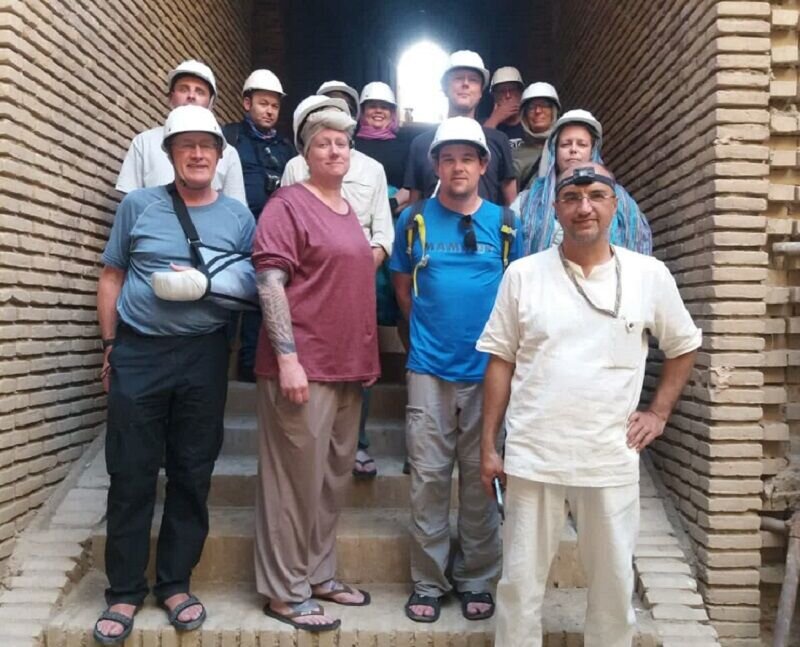UNESCO-listed Qasabeh Qanat hosts inbound tourists

TEHRAN – Gonabad’s historical Qasabeh Qanat, a UNESCO World Heritage site, has welcomed a group of overseas tourists.
On Sunday evening, the ancient Qasabeh Qanat, saw its first international visitors in the course of the current Persian year (started on March 20), according to the local official in charge of tourism.
Mehdi zolfaqari further elaborated that the team consisting of 13 tourists hailing from the United States, the United Kingdom, Germany, New Zealand, and Australia arrived to marvel at the 2,500-year-old engineering wonder.
“After exploring the site, the group continued their journey,” he brought to light. “Departing Gonabad for Mashhad, the provincial capital, as part of their broader tour of Iran.”
The Qasabeh Qanat, which boasts a history spanning over 2,500 years, is celebrated as the oldest and largest qanat in Iran. It stands as a testament to the ingenuity and advanced engineering skills of ancient Persian civilizations in managing water resources. This impressive feat of engineering provided a reliable water supply for agricultural and domestic use.
Its inclusion in the UNESCO World Heritage list in 2007 underscores its global significance and the need to preserve such historical sites for future generations.
The Qasabeh Qanat stretches over 33 kilometers, with its mother well located at the northern slope of Siah Kuh and the qanat’s current emergence in the eastern part of the town known as “Qasabeh Shahr.” The intricate system is composed of two main branches and six subsidiary channels, featuring a mother well depth of about 300 meters at its deepest point.
Remarkably, the qanat has an impressive water output of more than 130 liters per second, showcasing the advanced understanding of hydro-engineering possessed by its ancient builders.
This qanat, inscribed on Iran’s national heritage list in 2000, is a marvel of engineering and water resource management. Its design and construction techniques have fascinated historians, engineers, and tourists alike. The site continues to draw attention not only for its historical value but also for its potential to educate current and future generations about sustainable water management practices.
Gonabad itself is a treasure trove of history, with over 250 identified historical sites, 148 of which have been registered on the national heritage list. Among these, the Qasabeh Qanat holds a distinguished position. Its role in supporting agriculture and daily life in ancient times makes it an essential part of the region’s heritage.
Gonabad is located 287 kilometers south of Mashhad, the capital of Khorasan Razavi province. With its ancient qanat and numerous historical sites, Gonabad remains a beacon for those interested in exploring Iran’s rich and diverse cultural history.
XF
Leave a Comment